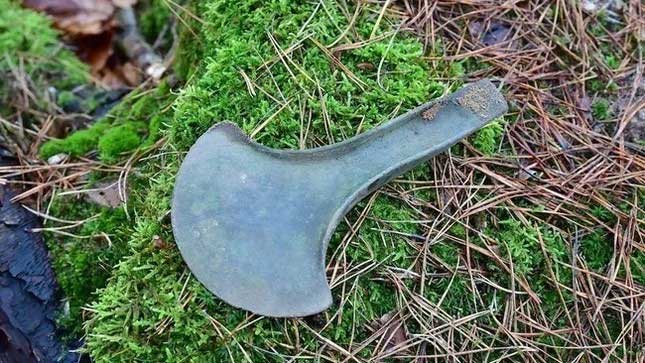Five axes recently discovered in Poland date back 3,500 years and may have been used as tools for sacrificial purposes.
A metal detector expert in Poland unearthed five Bronze Age axes buried in a forest. Archaeologists believe these artifacts may have been used for chopping wood or for ritualistic purposes.

One of the five crescent-shaped axes found in a forest in Poland. (Photo: Starogard Forest via Facebook)
Denis Konkol was exploring a densely wooded area in Kociewie, a region in northern Poland, when his metal detector emitted a beep. According to the Miami Herald, after digging about 20 to 30 centimeters into the ground, he uncovered these metal tools.
Archaeologists have analyzed the five axes and estimated them to be approximately 3,500 years old.
Igor Strzok, the conservation officer for the Pomeranian Voivodeship, stated: “These items are quite rare in such lands.”
Piotr Klimaszewski, head of the Archaeological Heritage Office, described these artifacts as “Tautušiai axes” – a tool with a slender neck and a crescent-shaped blade associated with Tautušiai, a village in Lithuania. Officials noted in a Facebook post that these tools could have been used for chopping wood or in combat.
However, it is possible that these axes were used as part of “cultic practices” or “sacrifices,” Klimaszewski added. In addition to these tools, archaeologists also found a 2,000-year-old fibula (a small brooch) used to fasten clothing, according to the Miami Herald.
Researchers are unsure why these artifacts appeared in the forest, adding that further study is needed to fully understand their history. But the research team is genuinely surprised by the excellent preservation of these axes.


















































